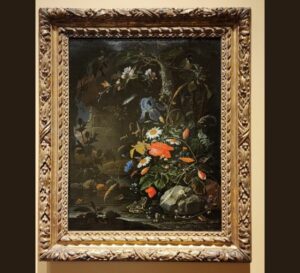Sabitri Chattopadhyay, “Amar Katha: Ki kore nayika holam” (“My Story: How I became a Heroine”) in Anandalok, Pujo Sankhya 1990. 238-69. Unless otherwise noted, all translations from Bengali are mine.
Narayan Gangopadhyay, Bidisha in Narayan Gangopadhyay Rachanavali v. 9 (Narayan Gangopadhyay’s Works) (Calcutta: Mitra and Ghosh, 1985), 26. The novel was first published in 1952.
- Shubhobroto Ghosh’s interview with Madhabi Mukherjee entitled “‘If you say something, you must speak out the whole truth. Or else, don’t say anything at all’.” Sunday (magazine), May 11, 2008. Internet version. <http://www.telegraphindia.com/1080511/jsp/7days/story_9254905.jsp>. Accessed January 10, 2013.
Aparna Basu and Bharati Roy. Women’s Struggle: A History of the All India Women’s Conference 1927-1990. New Delhi: Manohar, 1990.
<http://www.nariseva.net/aboutus.html> Accessed September 11, 2012.
<https://www.refugeehandicrafts.com/about> Accessed September 11, 2012.
Manikuntala Sen, Shediner Katha. Translated as In Search of Freedom: An Unfinished Journey. Calcutta: Nabapatra, 1982.
- Narendranath Mitra, Mahanagar. Calcutta: Mukunda Publishers, 1963. The story was originally titled “Abataranika.” The name change was made by Satyajit Ray when he rendered the work into film in 1963, apprehending through his cinematography the fragmenting effected by Partition not only of families and relationships, but also of the landscape of the big city, Calcutta. Mitra adopted both the new name and some alterations Ray made, expanding the story for publication in book form in 1963.
- Narendranath Mitra, Durabhashini, in Upanyasa Samagra v. 2. Calcutta: Ananda, 2004-. Originally published in Ganabarta as Akathita (The Unsung Woman) in 1951; renamed Durabhashini and published as a book in 1952.
Jyotirmoyee Devi, Epar Ganga Opar Ganga, in Jyotirmoyee Debir Rachana-Sankalan v. 1, eds. Subir Roy Chowdhury and Abhijit Sen. Calcutta: Dey’s Publishing and School of Women’s Studies, Jadavpur University, 1991. Originally published as Itihashe Stree Parba in the autumn issue of Prabashi in 1966, the novel was published as a book in 1968 under the new title.
Samaresh Basu, “Pasharini,” in Raktamonir Haré: Deshbhag-Swadhinatar Galpo Sankalan (In a Necklace of Garnets: Collection of Stories on Partition and Independence) v. 1. Debes Roy (ed.). Calcutta: Sahitya Akademi, 2005; first published 1999. All page numbers refer to this text.
Dibyendu Palit, “Machh,” in Raktamonir Haré. All page numbers refer to this text.
- Cited in Gargi Chakravartty, Coming out of Partition: Refugee Women of Bengal. New Delhi: Bluejay Books, 2005.
Ritu Menon and Kamla Bhasin, Borders and Boundaries: Women in India’s Partition. New Brunswick, NJ: Rutgers University Press, 1998.
- Arati Das’ interview with Paoli Dam and Kushali Nag. “Shefali to Paoli.” The Telegraph, Calcutta, August 28, 2012. <http://www.telegraphindia.com/1120828/jsp/entertainment/story_15903847. jsp#.UeWsbaybXcw> Accessed July 1, 2013.
Footnotes for Article on Women Entering Workforce After Partition
[wpavefrsz-resizer]
Tags

Debali Mookerjea Leonard
Debali Mookerjea-Leonard is a gold medalist in Comparative Literature from Jadavpur University, Calcutta and holds a Ph.D. from the University of Chicago. She is Professor of English and World Literature at James Madison University in the United States. Mookerjea-Leonard is the author of Literature, Gender, and the Trauma of Partition: The Paradox of Independence and the translator of Sunil Gangopadhyay’s novel Blood.
All Posts
Subscribe to Newsletter
You may also like

Linguistic Imperialism: English as a Controversy
Mayumi Yamamoto


Photo story: Upper Mustang the Forbidden Kingdom
Pijush Roychowdhury

Photo story: The Charak Mela in Kolkata
Siddhartha Paul

First And Last Lines of Famous Books In Literature
TheSpaceInk Feature

For Baisakhi Saha, The World Is Her Stage
Ranjita Biswas

Two Poems: The Pseudo Shoes
Arjya Nath

I Look Back At The World And Say, I can do anything: Srikanth Bolla
TheSpaceInk Feature

Gaudi, Paella and A Little Bit of Messi Sums Up Barcelona
Manjira Majumdar

From An Historian’s Notebook: Netaji’s Treasure Box
Benjamin Zachariah

Three Poems
Benjamin Zachariah

The Night is Short
Vidya Pai

Nature’s Images: A River Of Words
Aarav Kumar

A Tinge of Jewish Legacy in Kolkata
Atreyi Biswas

Land Of Mountains, Snow and Sunsets: Canada, Part 2
Surela Chakraborty

The Narrow Grain: A Cricketing Experience Of An Academician
Benjamin Zachariah

My Garden (Part Three)
Rahul Ray

Mumma’s Bindis IX: Over the Rainbow
Mousumi Banerjee





